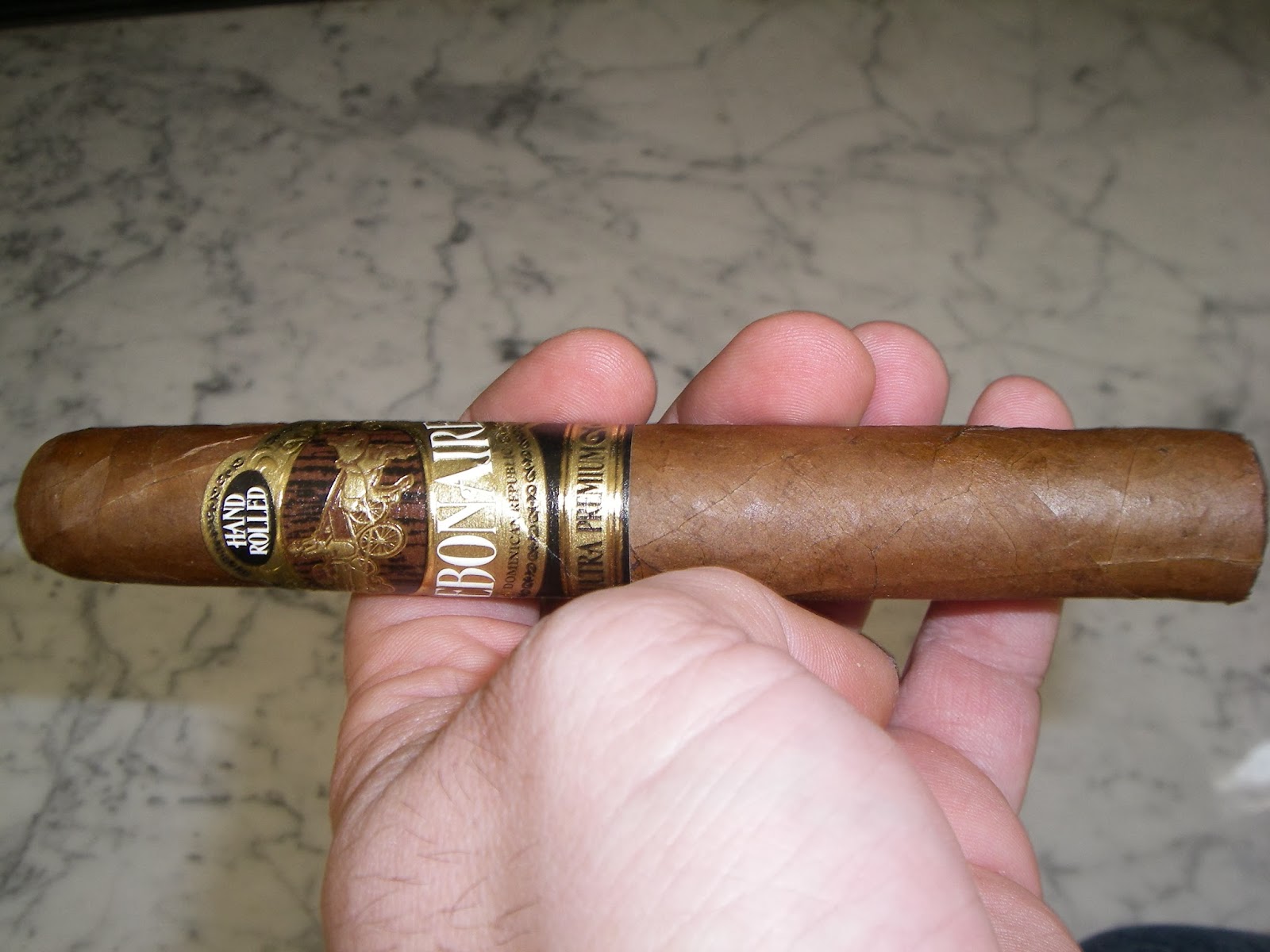 |
| Debonaire Toro |
Today we take a look at another vitola in the Debonaire Cigars core line – the Debonaire Toro. In 2012, Debonaire Cigars made their debut in three sizes. In 2013, the company introduced two line extensions – the Debonaire Sagita and the cigar we will talk about today, the Debonaire Toro. While each vitola of the Debonaire shares common blend components, one thing that has become clear is that each of the vitolas has their own unique story to tell. Consistent with the line as a whole, the Debonaire Toro delivers home run that appeals to a wide range of cigar enthusiasts.
Debonaire Cigars was founded by Philip Zanghi and Daniel Sinclair. Many people may remember Zanghi from his days with Indian Tabac – the company that eventually became Rocky Patel Premium Cigars. After a hiatus away from premium cigars, Zanghi returned to the handmade premium cigar business and launched Debonaire Cigars. Zanghi resides in the Dominican Republic allowing him to be close to the tobacco process from seed through shipping.
Without further ado, let’s take a closer look at the Debonaire Toro and see what this cigar brings to the table.
Blend Profile
Zanghi and his team take a very hands-on approach to the production process. The Debonaire line is referred to as an “ultra premium cigar”. It consists of tobaccos from Nicaragua and the Dominican Republic. For the line, Zanghi and his team have tapped into the resources of Emilio El Reyes – one of the leading growers based in the Dominican Republic. The cigars are also made in the Dominican Republic.
Wrapper: Nicaraguan Habano
Binder: Dominican
Filler: Dominican, Nicaraguan
Vitolas Available
Last year’s addition of the Toro and Sagita brings the total number of frontmarks in the Debonaire to five. As Zanghi has exclusively told us on the Stogie Geeks show, plans are to add a 4 x 44 petit salomon called “First Degree” and a 9 x 54 “A” size.
In terms of how the vitolas are constructed, the Debonaire line is bunched using accordion fold as opposed to entubado (tube) style. Zanghi emphasizes leaf placement in terms of being able to achieve the right flavor profile.
Sagita: 5 1/2 x 38
Toro: 6 x 50
Robusto: 5 1/4 x 50
Bellicoso: 6 x 54
Solomones: 7 3/4 x 58 (limited 500 boxes)
 |
| Debonaire Sagita |
Appearance
The Nicaraguan Habano wrapper of the Debonaire Toro has the trademark light to medium brown color to it that is seen across the whole line. I noticed more oil on the surface of the Toro as opposed to the Sagita vitolas I smoked. The wrapper also has some visible veins and visible wrapper seams.
The Debonaire Toro features the brand’s gold, brown, black, and white colored band that is common to the line. There is a gold stagecoach that sits on a brown background. Above the stagecoach is a black oval with the text “HAND ROLLED” in white font. Below the stagecoach is the text “DEBONAIRE” in large white font. In small black font below the Debonaire name is the text “DOMINICAN REPUBLIC” in small black font. Toward the lower part of the banding is the text “ULTRA PREMIUM” in black font on a gold background. The remainder of the band has black and gold adornments.
Preparation for the Cigar Experience
Prior to lighting up my Debonaire Toro, I went with my usual choice of a straight cut. After clipping the cap, I started the pre-light draw ritual. The cold draw provided notes of classic natural tobacco sweetness, along with some notes of wood and floral sweet-spice. Overall I considered the pre-light draw of the Debonaire Toro to be very good. At this point, I was ready to light up this cigar and see what the smoking phase would have in store.
Flavor Profile
As mentioned the start, the vitolas of the Debonaire line each have their own profile. The Toro is no exception. From a flavor perspective, the Debonaire Toro brings the best of what the Debonaire line has to offer, yet puts its own spin on it.
The start to the Debonaire Toro provided a mix of black pepper, wood, and natural tobacco flavors. In the early stages the wood and natural tobacco flavors moved into the forefront while the pepper became a secondary note.
The wood and natural tobacco started to fuse together and the end result was the beginnings of a “smoked meat” taste. This taste is different and it is something I have detected across the Debonaire line. Meanwhile, the smoky notes could also be detected on the retro-hale as I got a nice “smoky pepper” flavor through the nasal passages.
By the end of the first third, the primary flavors were now the smoked meat and natural tobacco notes. In the background the black pepper was present. There were some distant tertiary notes of grass and cream.
By the midpoint of this cigar, the smoky meat flavors kicked in. The natural tobacco flavors joined the grass and pepper flavors in the background. From time to time, I also picked up a floral note. The cream note (which had been distant) was gone.
In the last third, the pepper moved into the forefront – alternating with the smoky meat flavors. There was still a subtle sweetness from the natural tobacco. The Debonaire finished up still making me want more smoking time as the cigar remained flavorful until the end. The resulting nub was firm to the touch and cool in temperature.
Burn and Draw
From the burn perspective, the Debonaire Toro scores quite well. Keeping the burn line straight was a low maintenance task and it required only occasional touch-ups along the way. The burn rate and burn temperature were ideal. I did notice a difference with ash of the Debonaire Toro as opposed to the Debonaire Sagita. I found the ash of the Toro to be darker – more of a charcoal gray colored as opposed to the white color of the Sagita. The ash was slightly little looser on the Toro, but I expected it with the big ring gauge.
 |
| Burn of the Debonaire Toro |
The draw to the Debonaire Toro was excellent. It was not too tight and not too loose. It made the cigar an easy cigar to puff on from start to finish.
Strength and Body
When it came to strength and body, I found the Debonaire Toro to amp’d down when comparing it to the Deboanire Sagita. From a strength perspective, I found the Debonaire Toro to fall into the medium strength range from start to finish. As for the flavors, I also assessed them to be medium-bodied to start. By the second half, these flavors had progressed to medium to full-bodied. With the Sagita, I found the strength to be medium to full while the body started out medium to full and progressed to full – thus, the Toro was dialed back in my book.
As for strength versus body, I found the body to have a slight edge over the strength throughout the smoke.
Final Thoughts
I drew several analogies between the Debonaire Toro and Debonaire Sagita to highlight some of the similarities and differences. When you smoke both, you know you are smoking a blend with common tobacco components, but at the same time you are getting two distinct experiences. With the Toro, I found this cigar to be a little more dialed back and a little less sweetness than its Sagita sibling.At the same time, I found the smoky meat taste of the Toro to be more prominent. In the end, I liked what the Toro delivered. The Debonaire Toro is something I can recommend to either a seasoned or novice cigar enthusiast. As for myself, this is a cigar I’d easily smoke again – and it’s box worthy in my book.
Summary
Burn: Excellent
Draw: Excellent
Complexity: High
Strength: Medium
Body: Medium (1st Half), Medium to Full (2nd Half)
Finish: Excellent
Assessment: 4.0 – Box Worthy
Score: 93
References
Price: ~$14.00
Source: Purchased (*)
Stogie Geeks Podcast: Episode 84
Stogie Feed: Debonaire Sagita
(*) Disclaimer: Debonaire Cigars is a sponsor of Cigar Coop / Stogie Geeks. The cigars for this review were still purchased. For a list of retailers to purchase Debonaire, click here.




